What produce should you buy in July?
Summer is here! There is so much produce in season this month.
What is in season in July? Produce peaks at different times throughout the US so there will be some variances. But here is a general guide.
To make it easier for you to plan your meals and make a grocery list, I have created produce guides for every month letting you know what is in season along with a few recipe suggestions.

Why Buy Fruits and Vegetables When They Are in Season?
Cost: Produce prices are subject to supply and demand. When produce is in abundance because it is in-season the prices go down.
Eco-Friendly: In-season produce is more likely to be grown locally meaning it doesn’t have to travel as far to get to you reducing its carbon footprint. Stop by your local farmers market to purchase some of the freshest produce available.
Taste: In-season produce is fresher and tastes better. It is grown during its optimal conditions and because it can be grown more locally it usually has a chance to fully ripen before it is picked
Nutrition: Fully ripened produce is more nutritious because it has had time to fully develop before being picked.
What’s in Season in July?
Jump to:
- Save This Recipe to Your Email
- Why Buy Fruits and Vegetables When They Are in Season?
- What’s in Season in July?
- Apricots
- Blackberries
- Blueberries
- Cantaloupe
- Corn
- Cucumber
- Green Beans
- Kiwi
- Kohlrabi
- Lettuce
- Mangoes
- Okra
- Peaches
- Peppers
- Plums
- Raspberries
- Strawberries
- Summer Squash
- Swiss Chard
- Tomatoes
- Watermelon
- Zucchini
- 💬 Comments
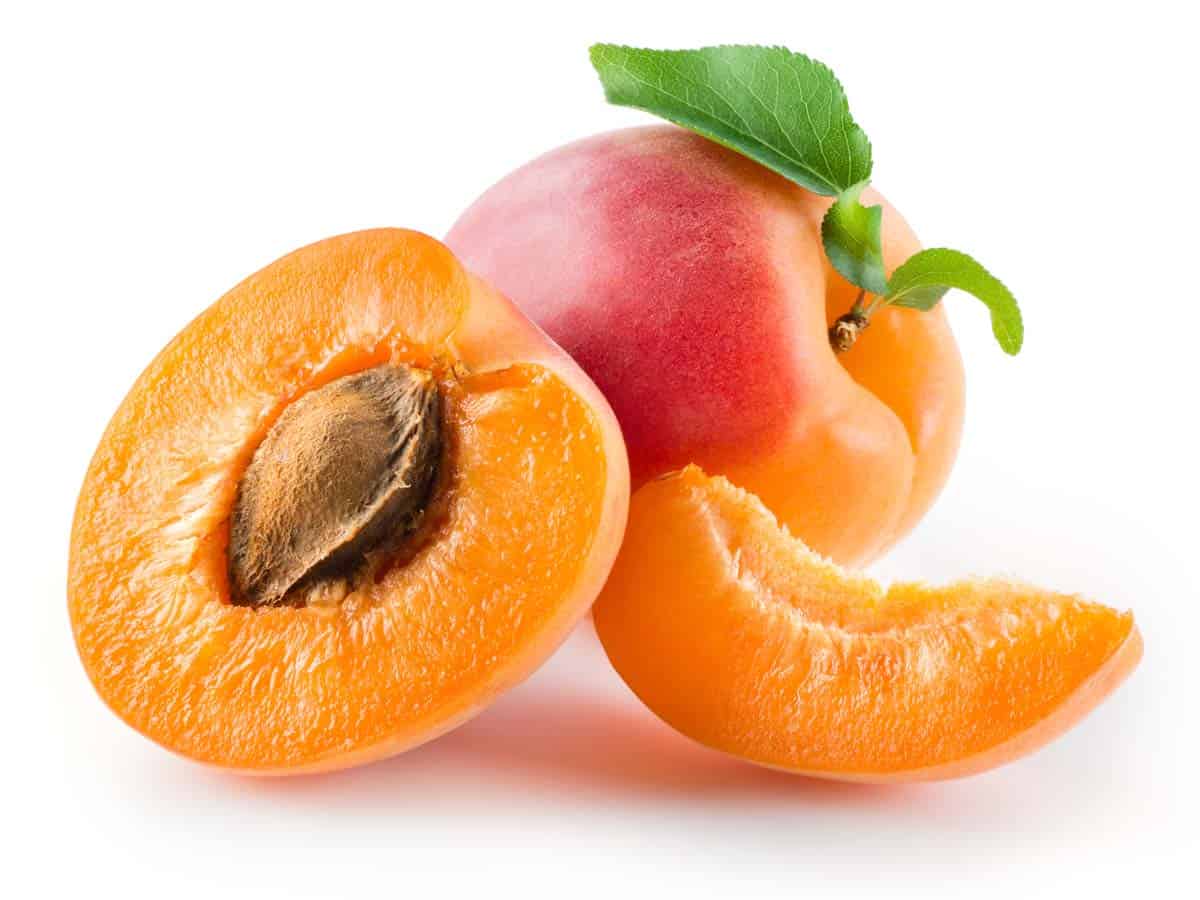
Apricots
Apricots have a very short season from mid-May to early July so pick some up while you can. Apricot flesh is usually firm and not very juicy. Its taste can range from sweet to tart.
They taste great baked into a pie or cobbler. Apricot flesh is usually firm and not very juicy. Its taste can range from sweet to tart.
Buying
Look for apricots that are golden in color and firm. Avoid apricots that are a pale greenish-yellow color, rock hard, very soft, or shriveled.
Storing
If your apricots are not quite ripe, place them in a paper bag at room temperature for 2 to 3 days to speed up the ripening process. Unripe apricots can be stored at room temperature for up to 5 days.
Refrigerate ripe apricots in an airtight container for up to one week.
Preparing
Apricots are in the stone fruit family meaning they have a large pit in the middle. Slice a ripe apricot around its natural seam, twist the two halves in opposite directions, and remove the pit.
Recipes
- Fresh Apricot Crumble with Oat Topping - A Baking Journey
- Apricot and Cream Cheese Pastry - It's Not Complicated Recipes
- Easy Apricot Cake - Where is my Spoon

Blackberries
Blackberries are high in fiber and antioxidants. In fact, one cup of blackberries has over twice the fiber content of a cup of brown rice.
Buying
Look for blackberries that are shiny, firm, plump, and deep black color. Avoid blackberries that are shriveled, leaking, or bruised.
Storing
Blackberries can be refrigerated for up to 6 days. Store in a single layer to avoid bruising.
Preparing
Wash just before use. Blackberries can be frozen for up to one year.
Recipes
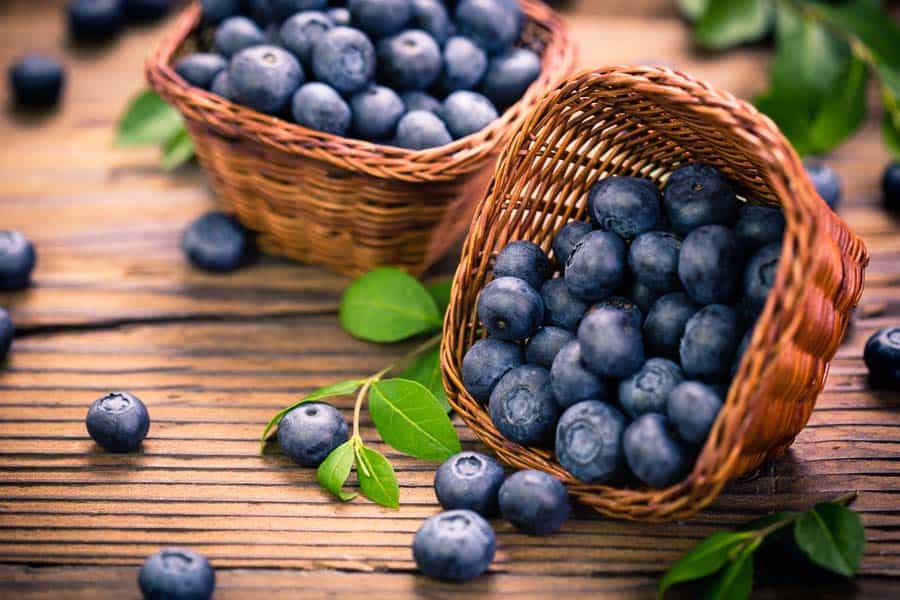
Blueberries
Blueberries are one of only three berries that are native to North America: blueberries, cranberries, and Concord grapes.
Buying
Look for blueberries that are firm, plump, and dark indigo. Avoid berries that are shriveled or show signs of mold.
Storing
Store blueberries in a covered container for up to ten days. Wash just before using.
Preparing
Rinse and drain blueberries well. Check for any remaining stems.
Recipes
- Blueberry Muffins
- Blueberry Jam
- Blueberry Mango Muffins
- Blueberry Creme Brulee
- Sourdough Blueberry Thyme Scones
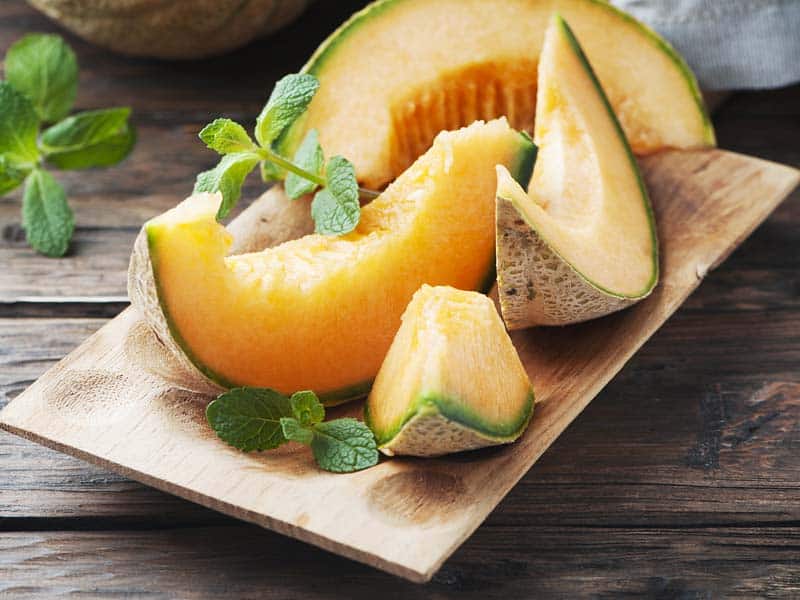
Cantaloupe
Cantaloupes are sweet and juicy and are high in vitamin A and vitamin C. Their high water content also helps to ward off dehydration.
Buying
Cantaloupe should have a sweet smell, yellow-tinged skin, a thick texture rind, and no stem. Avoid cantaloupe that has an overly sweet smell and soft spots.
Storing
Whole cantaloupes can be stored on the counter for up to four days. Cut cantaloupe should be refrigerated and can be stored for up to two days.
Preparing
The surface of a cantaloupe can contain Salmonella. Before consumption, you should wash and scrub the cantaloupe thoroughly.
Cut off the stem end about ¾ inch from the end. Place the melon cut end down on a cutting surface. Cut the melon in half and gently scrape out the seeds with a spoon. Cut as desired.
Recipes
- Spicy Sweet Cantaloupe Salad - Dish n the Kitchen
- Easy Watermelon Skewers With Prosciutto - Recipes from a Pantry
- Cantaloupe Arugula Salad with Poppy Seed Dressing - Flavour and Savour
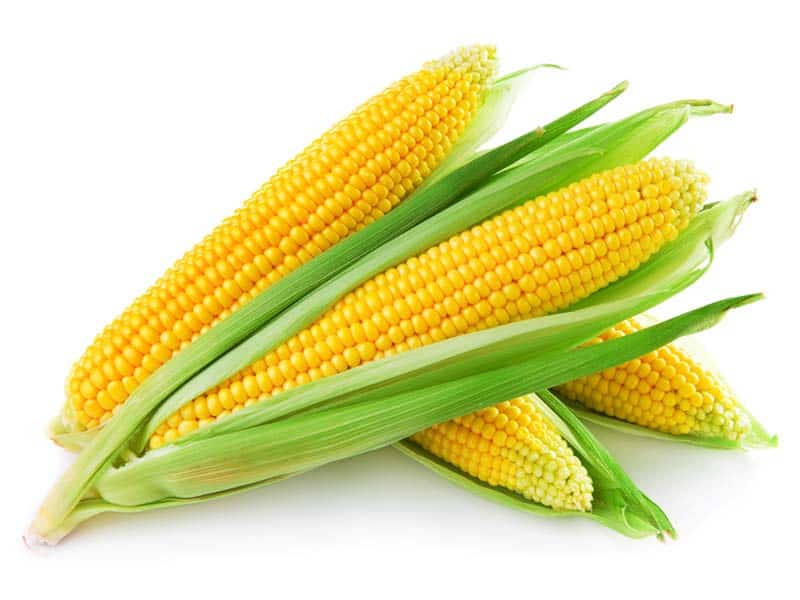
Corn
There are six major types of corn: dent corn, flint corn, pod corn, popcorn, flour corn, and sweet corn. Sweet corn is the variety that is sold in stores for cooking.
Buying
Look for corn ears with green husks, fresh silk, and tight rows of kernels. Avoid husks with brown spots and dry, yellowed stems.
Do not buy corn ears that have kernels with gaps between them and have brittle silks.
Storing
Refrigerate corn in its husk for 1-2 days. If corn is unhusked, put the ears in a plastic bag and refrigerate.
Preparing
Keep the ears in their husks until just before cooking.
Recipes
- Cream Style Corn - Savory with Soul
- Grilled Zucchini and Corn Salad with Cilantro Dressing - Grace J. Silla
- Mexican Street Corn Salad - Served From Scratch
- Sweet Corn Creme Brulee
- Roasted Summer Vegetable Pasta Salad
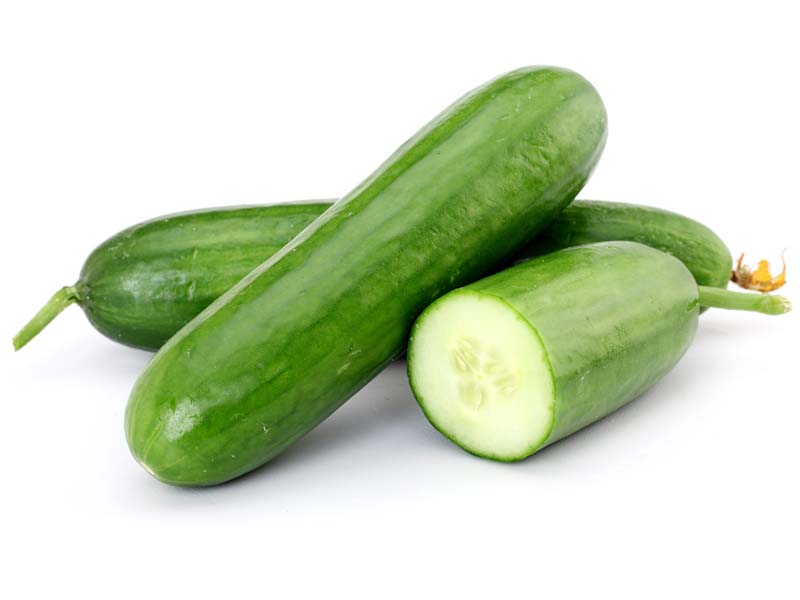
Cucumber
Cucumbers are 95% water. Cucumbers can be categorized into three different groups: slicing, pickling, and seedless/burpless.
Slicing cucumbers are grown to eat fresh. Pickling cucumbers are meant to be preserved in a brine of salt and vinegar. They are uniform in length and diameter for even pickling.
Seedless cucumbers are sweeter, have thinner skin, and have fewer seeds making them easier to digest. Because of their thinner skin they are more prone to damage and bruising so they are often wrapped in plastic when sold at grocery stores.
Buying
Look for cucumbers that are firm, blemish-free, and dark green in color. Cucumbers should also be heavy for their size.
Storing
Refrigerate cucumbers in a plastic bag for up to one week.
Preparing
Wash cucumbers just before using.
Recipes
- Pineapple Cucumber Salsa - Suburbia Unwrapped
- Keto Cucumber Salad - Oh So Foodie
- Cucumber Ranch Dressing - Bitz n Giggles
- Greek Chicken Flatbread Pizza

Green Beans
There are more than 130 varieties of green beans that differ in taste, color, and size. Green beans are high in vitamins A, C, and K, folic acid, and fiber.
Buying
Green beans should be brightly colored and snap easily when bent. Select beans of similar size and shape for a more uniform cooking time.
Storing
Green beans can be refrigerated for up to one week.
Preparing
Wash green beans in cold water before cutting and cooking. To retain sweetness and crispness, trim both ends but keep beans whole. Older, stringy beans should be cut lengthwise.
Recipes
- Tortitas de Ejotes: Guatemalan Green Bean Fritters - A Taste for Travel
- Green Bean Salad with Feta and Almonds - Mrs. Jones Kitchen
- Braised Winter Pork Stew
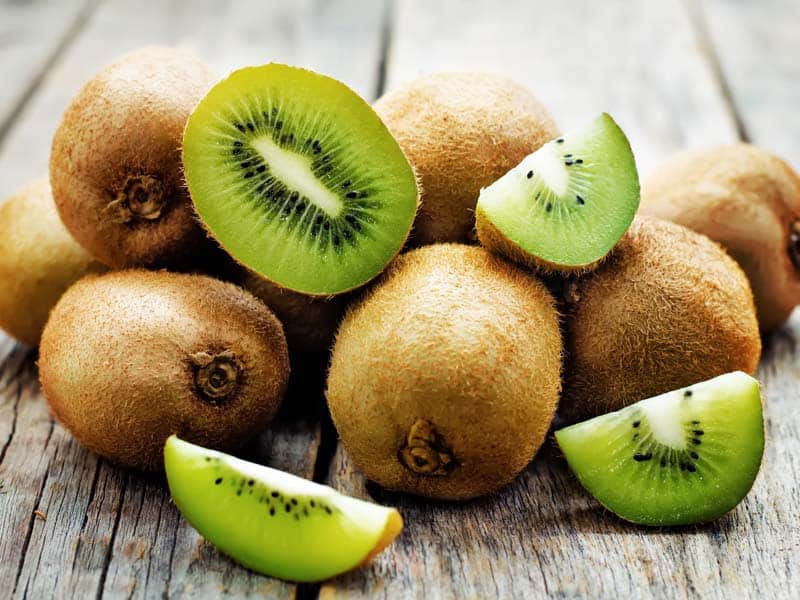
Kiwi
Kiwis, also known as Chinese gooseberries, are native to China. They were first grown commercially in New Zealand, where they picked up the name “Kiwifruit.” Kiwis have more vitamin C than oranges.
There are three varieties of kiwis:
- Fuzzy kiwis: The most common variety is about the size of a large egg with a fuzzy brown exterior and bright green fruit.
- Kiwi berries: These are the size of a grape, with a fuzzless, smooth skin and the same bright green interior.
- Golden kiwi: These have golden flesh that’s sweet and a bit tropical tasting.
Buying
Look for kiwis that are firm but yield to gentle pressure and are blemish-free. Avoid kiwis that are hard, moldy, spotted, or shriveled.
Storing
Ripen kiwis at room temperature. Speed up the ripening process by placing kiwis in a paper bag with an apple or banana. The additional ethylene gas produced by the apple or banana will speed up the ripening process.
To slow down ripening, store kiwi in the fridge.
Preparing
Rinse well before eating. Peel and chop kiwis or slice them in half and scoop out the flesh with a spoon. If desired the skin is edible, too.
Recipes
- Tropical Fruit Salad with Lime and Coconut - Flavor the Moments
- Kiwi Lemonade - Sweet and Savor by Shinee
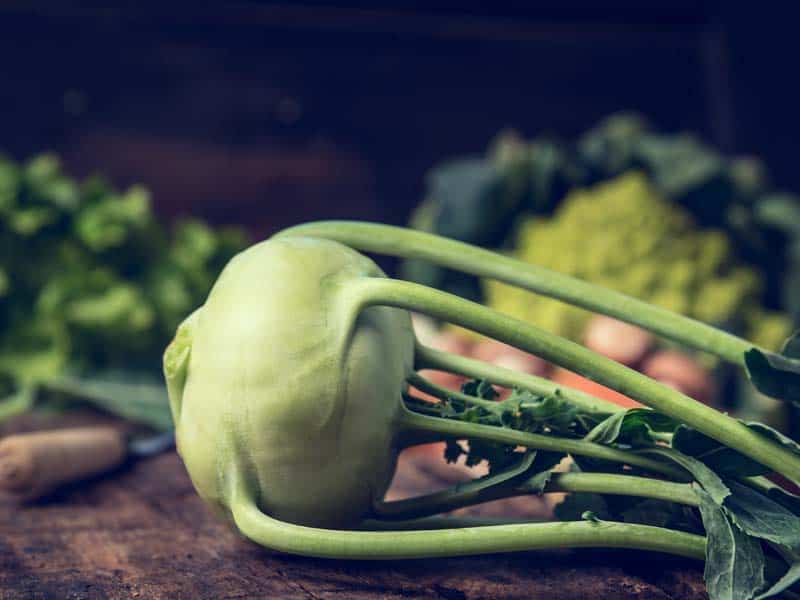
Kohlrabi
Kohlrabi can be either green or purple and can be eaten raw or cooked. The word kohlrabi is German for “cabbage turnip” (kohl as in cole-slaw, and rübe for turnip.
The flavor is a cross between broccoli, radish, and cabbage. It is in the brassica family—like cabbage, broccoli, and cauliflower.
Buying
Look for kohlrabi that is firm, blemish-free, and about 3-5 inches in diameter. Avoid kohlrabi that is larger than 5 inches in diameter because it can be woody.
Storing
Before refrigerating, cut off the leaves, wrap them in a damp paper towel, and place them in a plastic bag. The leaves can be refrigerated for three to four days. The bulb can be refrigerated for a month or more.
Preparing
Wash just before use and use a vegetable peeler to peel away the tough outer skin. The greens can also be sauteed or steamed like mustard greens. Kohlrabi can be added to soup, made into fritters, roasted, sauteed, or steamed.
Recipes
- Kohlrabi Fries
- Kohlrabi Slaw - Feasting at Home
- Kohlrabi Carrot Fritters with Avocado Cream Sauce - A Couple Cooks
- Asian Kohlrabi Salad - Destination Delish
- Braised Winter Pork Stew
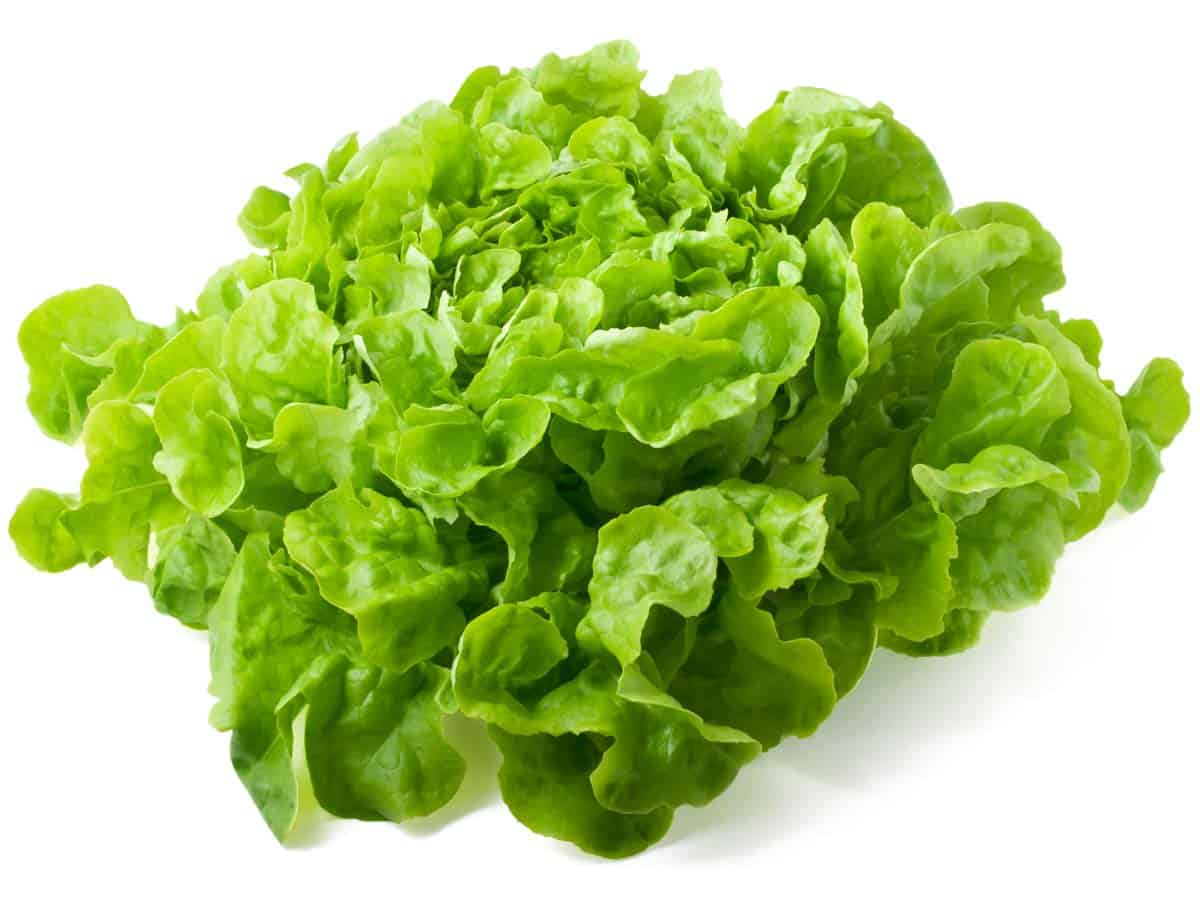
Lettuce
Lettuce is most often used raw in salads and sandwiches but it can also be grilled. Lettuce is an excellent source of vitamin K, vitamin A, folate, and iron.
It has a high water content making it a great choice as temperatures continue to rise.
Buying
Look for fresh crisp leaves that are tightly bunched. Avoid lettuce with wilted or brown leaves.
Storing
Lettuce should be loosely covered and can be refrigerated for up to one week.
Preparing
Rinse lettuce under cold water. Use a salad spinner or pat the leaves dry to remove excess moisture. Slice, chop or tear as needed.
Recipes
- Simple Summer Salad with Peaches and Burrata - Zestful Kitchen
- Roasted Tomato Salad with Burrata Cheese - Mae's Menu
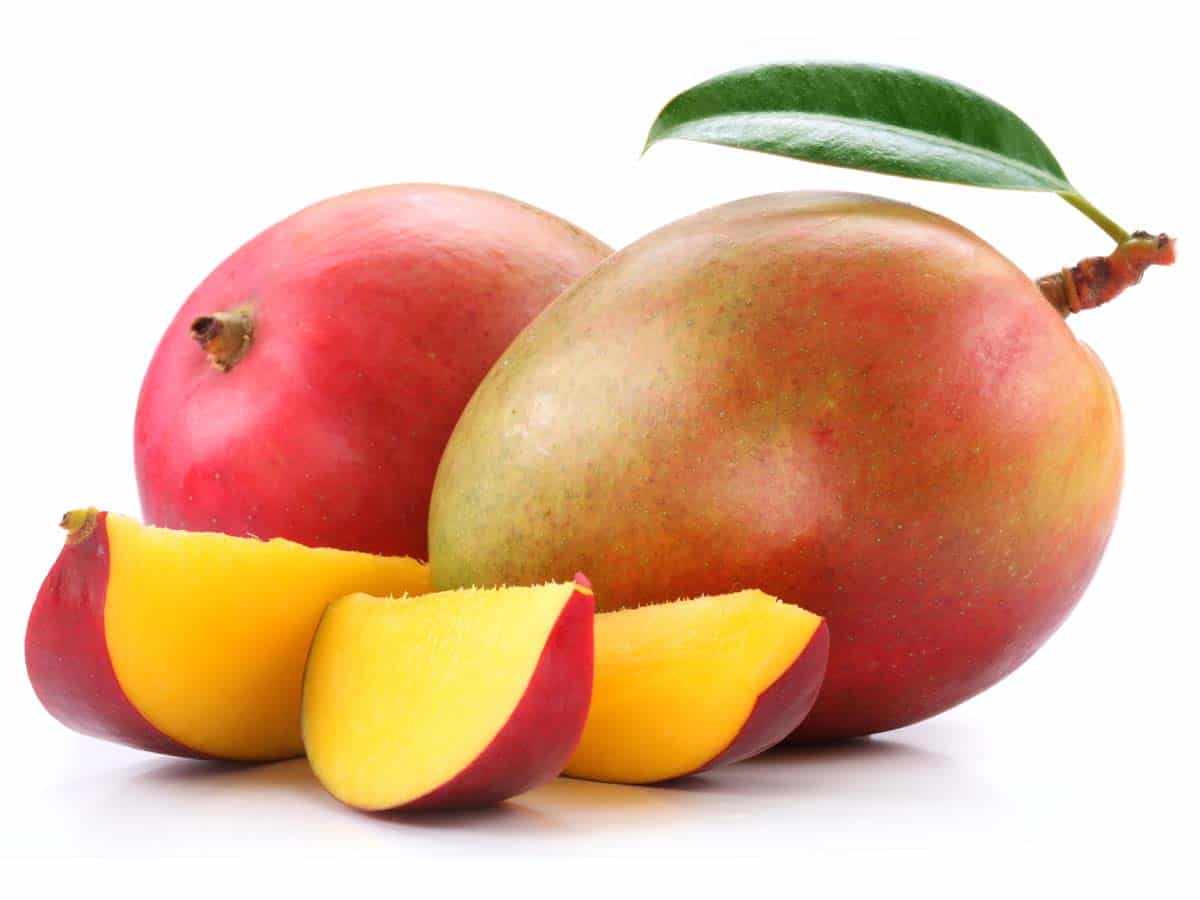
Mangoes
Mangoes are sweet, juicy, and are an excellent source of vitamin A, vitamins C, and beta-carotene. They are also one of the most commonly eaten fruits in the world, with a majority of them coming from India.
Mangos are stone fruits, meaning they have one hard seed surrounded by fruit.
Buying
Mangos should yield to gentle pressure and be without blemishes or dark spots. They should also have a sweet fragrant aroma.
Color has little to do with ripeness and can vary depending on the type of mango.
Storing
Mangoes can be refrigerated for up to 3 days. Place mangos in a paper bag to speed ripening.
Freeze chopped and peeled fruit in a plastic bag with the air squeezed out for up to 3 months.
Preparing
Mangos contain a large, flat pit. To cut a mango, insert the knife into the mango's flesh until you reach the pit. Slice horizontally against the pit, then continue along the other three sides.
To remove the flesh from the skin, score the flesh by cutting just until you reach the skin. Turn the skin inside out and use a paring knife to remove the flesh from the skin.
Recipes
- Mango Curried Chicken Salad - Mighty Mrs.
- Mango Ice Cream Recipe With Strawberry Swirls - Veg 2 Nonveg
- Mango Iced Tea - Veg Recipes of India
- Mango Blueberry Muffins
- Mango Pancakes
- Mango Creme Brulee
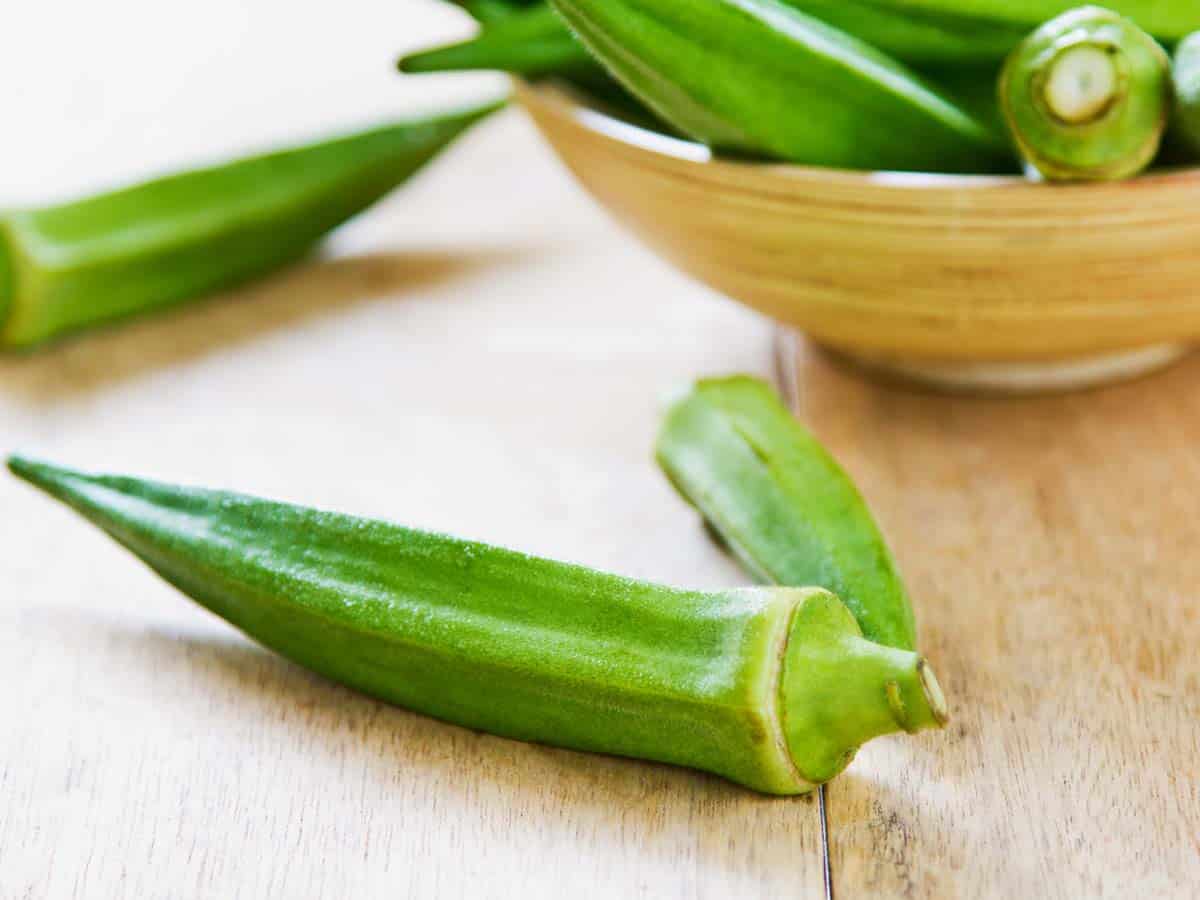
Okra
Okra is a green, finger-shaped vegetable that is very popular in southern cooking. Okra can be grilled, sauteed, fried, pickled, or stewed. It is a great source of fiber, vitamin C, and vitamin K.
Buying
Okra should be dry, firm, and without blemishes. Okra should also be fuzzy like a peach. Avoid okra that is soft, wet, or moldy.
Storing
Okra pods can be refrigerated for up to 3 days.
Preparing
Wash and remove the stem. Slice as desired. Cook okra with vinegar or acidic food to prevent it from becoming slimy.
Recipes
- Seafood Okra - Low Carb Africa
- One-Pot Cajun Pasta - Strength and Sunshine
- Bhindi Sabzi (Okra Stir-fry) - Indian Ambrosia
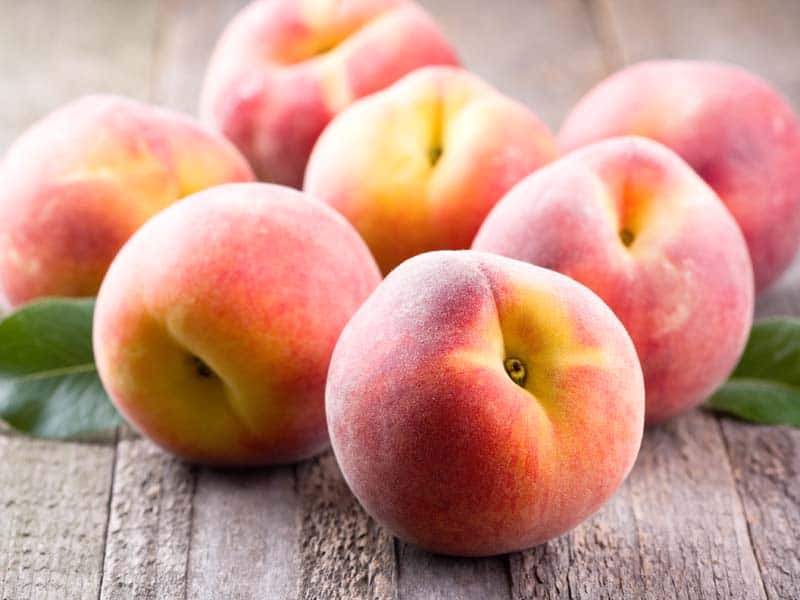
Peaches
The peach is closely related to the almond. The inside of a peach stone tastes remarkably similar to an almond. Peach stones are often used to make a cheap version of marzipan, known as persipan.
Peaches are divided into two types clingstones and freestones, depending on whether the flesh sticks to the stone or not. Both types can have either white or yellow flesh.
Peaches with white flesh are typically very sweet with little acidity, while yellow-fleshed peaches typically have an acidic tang coupled with sweetness.
Buying
Look for peaches that are firm but yield to gentle pressure. Avoid peaches with blemishes, bruises, and any hint of green (green is an indicator that the peach was picked too early and will not ripen.)
Storing
Store ripe peaches at room temperature for up to 2 days. Keep peaches separated and do not allow them to touch. Peaches stored too closely together will ripen more quickly and encourage spoiling.
Ripen peaches in a brown paper bag and watch them closely as they can ripen within 24 hours.
For long-term storage, here is more information on how to freeze peaches.
Preparing
Wash peaches just before use. If cooking peaches, remove the skin as it can become tough when cooked.
To remove the skin, cut an X through the skin of each peach. Drop peaches into boiling water for 1 minute and then plunge into ice water. The skin should peel easily. Once peeled, eat or cook immediately.
Recipes
- Peach Creme Brulee
- Peach Oatmeal Bars
- Spiced Blueberry Peach Yogurt Muffins - Barth Bakery
- Delicious Streusel Cake Topped with Peaches - Sustain My Cooking Habit
- Beet and Peach Salad with Basil and Goat Cheese - Just Beet It
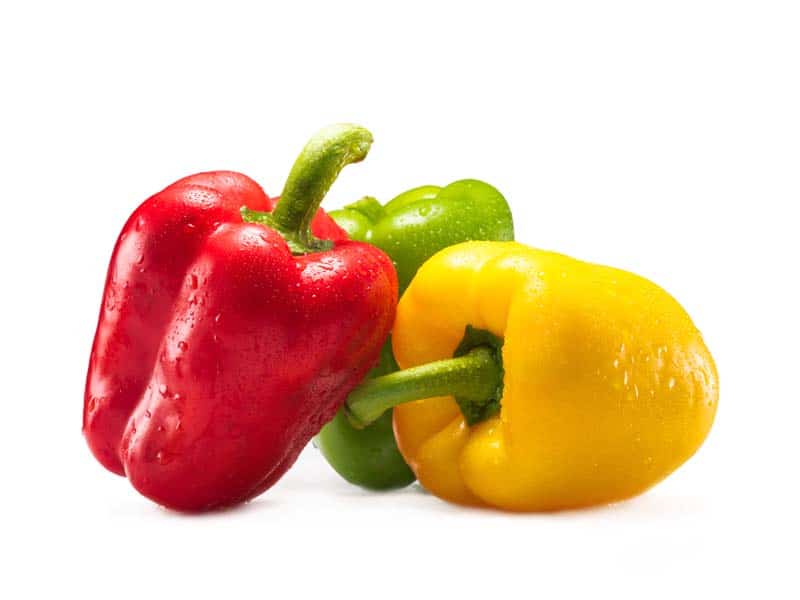
Peppers
Peppers come in many different colors including green, yellow, orange, red, brown, white, light purple, and dark purple.
The bell pepper is the only member of the genus Capsicum that does not produce capsaicin, a chemical that can cause a strong burning sensation when it comes in contact with mucous membranes. They are also an excellent source of vitamin C.
Buying
Bell peppers should be firm with glossy skin. Avoid peppers that are shriveled or have soft spots.
Storing
Bell peppers can be refrigerated for up to five days.
Preparing
Wash peppers and remove the stem and seeds. It is easier to cut peppers if you keep the interior of the pepper facing up and the more slippery skin side down on the cutting board.
Recipes
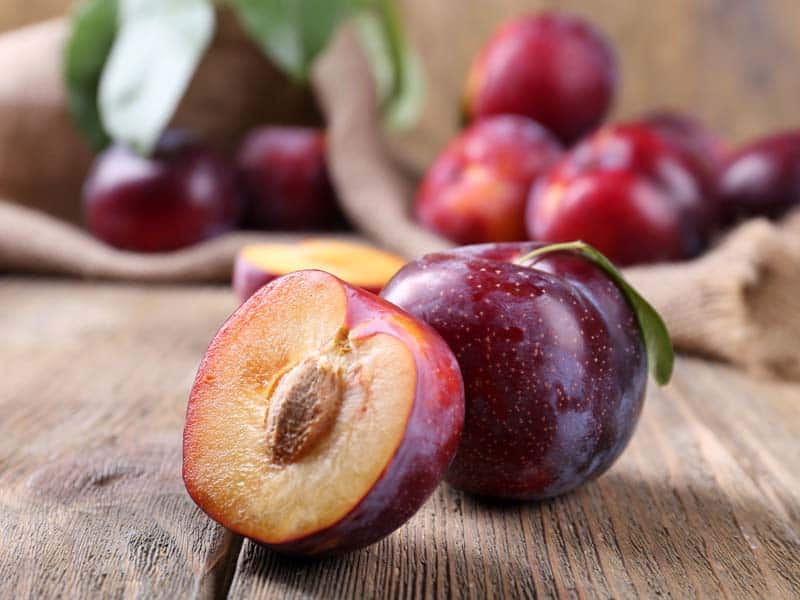
Plums
There are over 2000 varieties of plums that come in a range of colors. Plums can be red, purple, blue-black, green, yellow, or amber.
A plum's flavor can range from tart to sweet. The skin in particular tends to be tart and surrounds sweeter juicy flesh.
Buying
Look for plums that are heavy for their size, smooth, and without blemishes.
Avoid plums that are shriveled or have spots and discoloration. Ripe plums will be slightly soft.
You can ripen firm plums in a paper bag at room temperature but you should avoid plums that are excessively hard as they were harvested prematurely and will never ripen properly.
Storing
Plums should be ripened at room temperature until they begin to soften. Ripe plums can be refrigerated for up to four days. Before eating allow plums to return to room temperature for maximum juiciness and sweetness.
Preparing
Wash before eating. Cut along the seam and twist open to remove the pit.
Recipes
- Plum Oatmeal Bars
- Plum Crumble with Vanilla Ice Cream - In the Kitch
- Spiced Plum Cobbler Cake - Sumptuous Spoonfuls
- Fresh Plum Cake - Simply Happy Foodie
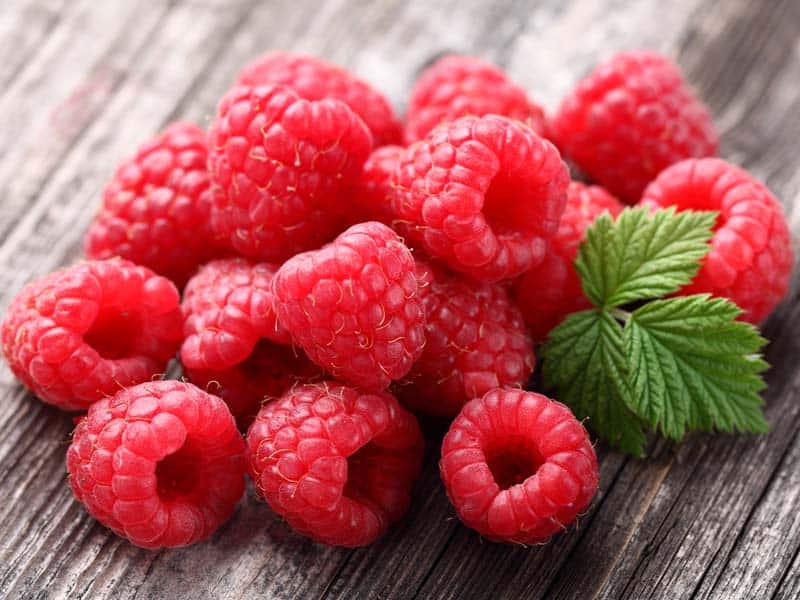
Raspberries
There are over 200 varieties of raspberries bearing fruits that are black, purple, red, orange, or yellow.
Buying
Look for raspberries that are plump, dry, and firm. Avoid raspberries that are soft, shriveled, or moldy.
Storing
Refrigerate unwashed raspberries in a single layer in a moisture-proof container lined with a paper towel for up to 3 days.
Preparing
Gently wash and pat dry just before using.
Recipes
- Apple Raspberry Muffins
- Raspberry Nutella Brownies
- Raspberry Lemon Napoleons - Savvy Saving Couple
- Scottish Cranachan - Christina's Cucina
- Raspberry Lemon Scones - Food Meanderings
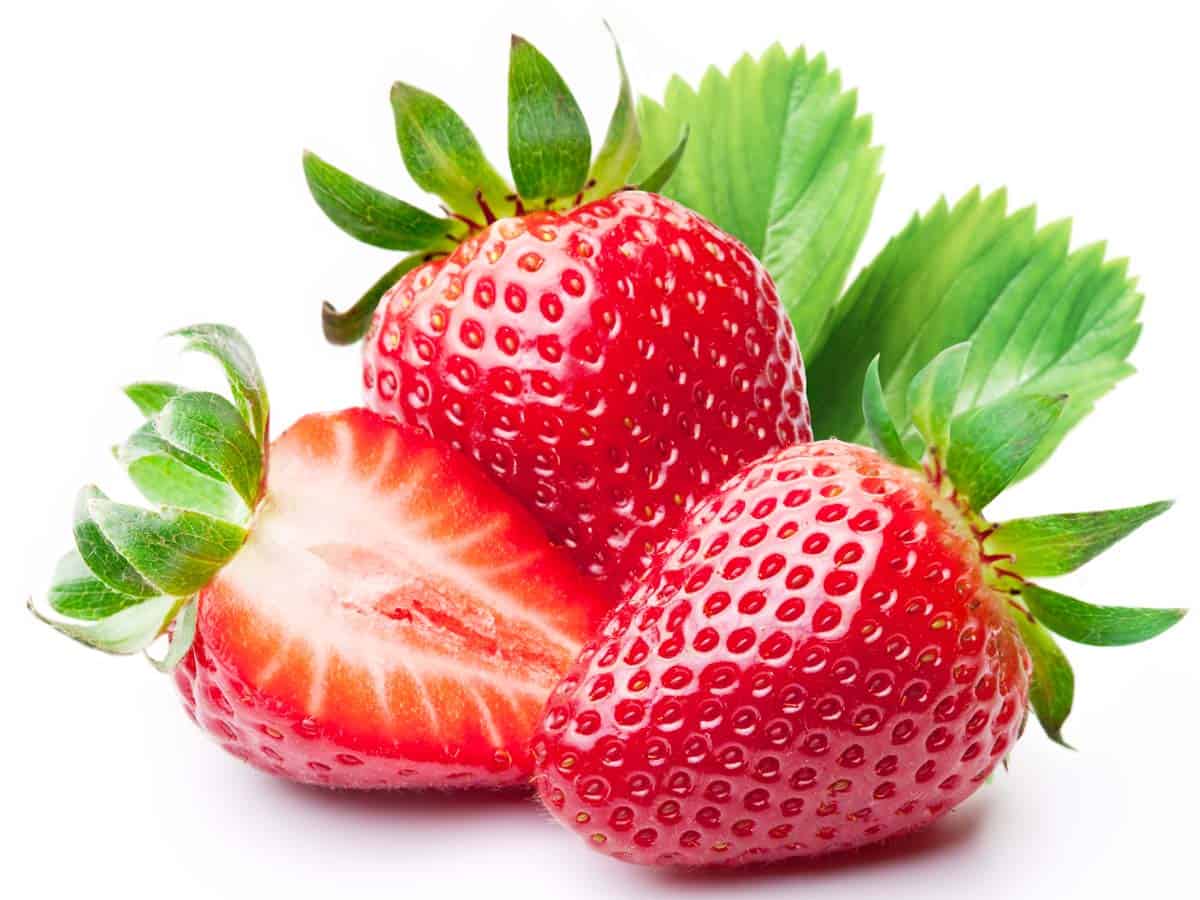
Strawberries
Strawberries are one of the most popular fruits in the world. They are a juicy mix of sweet and tart.
Strawberries are frequently eaten fresh, as part of a mixed fruit salad, topping a dessert like a fruit tart or my favorite angel food cake, or in a savory salad.
They can also be cooked into jams and compotes or baked into cakes and loaves of bread.
Buying
Look for brightly colored plump strawberries with fresh green caps. Avoid strawberries that are wilted, moldy, bruised, or have white or green parts.
Storing
Strawberries can be refrigerated for 3 to 5 days. Take them out of the refrigerator 30 minutes before consuming them. They taste sweeter when at room temperature.
Preparing
Just before eating or cooking strawberries, swish in a bowl of cold water to clean. Do not soak the strawberries. Hull (remove the leaves and green caps) and slice strawberries as desired.
Recipes
- Rhubarb Strawberry Jam - Hilda's Kitchen Blog
- Vegan & Gluten-Free Strawberry Crisp - The Granola Diaries
- Strawberry Oatmeal Pancakes
- Strawberry Sauce with Lemon
- Strawberry Banana Chocolate Chip Smoothie
- Strawberry Chocolate Cupcakes
- Roasted Strawberry Balsamic Jam
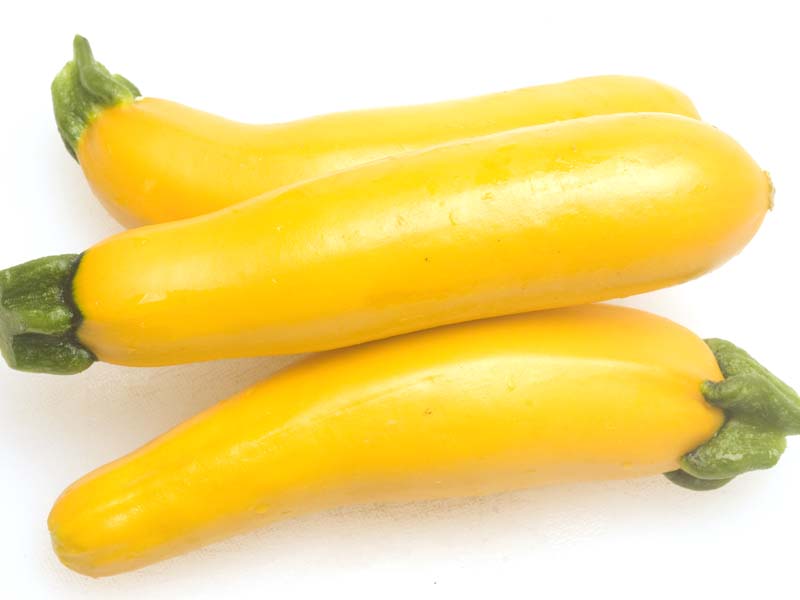
Summer Squash
Summer squash sometimes called yellow squash unlike winter squash has thin edible skin. They can be eaten raw or cooked and have a mild sweet flavor.
Buying
Look for smaller squash that is firm and blemish-free. Larger squash can be woody. Avoid squash that is soft and shriveled.
Storing
Squash can be refrigerated for up to one week.
Preparing
Wash and trim the ends. Peeling is not necessary.
Recipes
- Sausage and Squash Skillet in One-Pot - Yall Come Eat
- Yellow Squash Chocolate Doughnuts - Little House Living
- Crispy Parmesan Oven-Fried Squash - Went There 8 This

Swiss Chard
Swiss chard is less bitter when it is raw rather than when it is cooked. Swiss chard is a great source of vitamin A, vitamin K, and vitamin C.
Buying
Swiss Chard should have dark green leaves and brightly colored stems, Avoid swiss chard that is dried out and brown.
Storing
Swiss chard can be kept in the refrigerato9r for up to five days.
Preparing
Swiss chard can be eaten raw or cooked. Before using chard, cut the leaves away from the stems and wash leaves in cold water.
Rinse stems and trim off any blemishes. Swiss chard stems are tougher than the leaves and require a longer cooking time of an additional five minutes.
Recipes
- Sauteed Swiss Chard with Caramelized Shallots - She Keeps a Lovely Home
- Swiss Chard and Mushroom Squares - Kalyn's Kitchen
- One Pan Garlic Butter Salmon and Swiss Chard - Bowl of Delicious
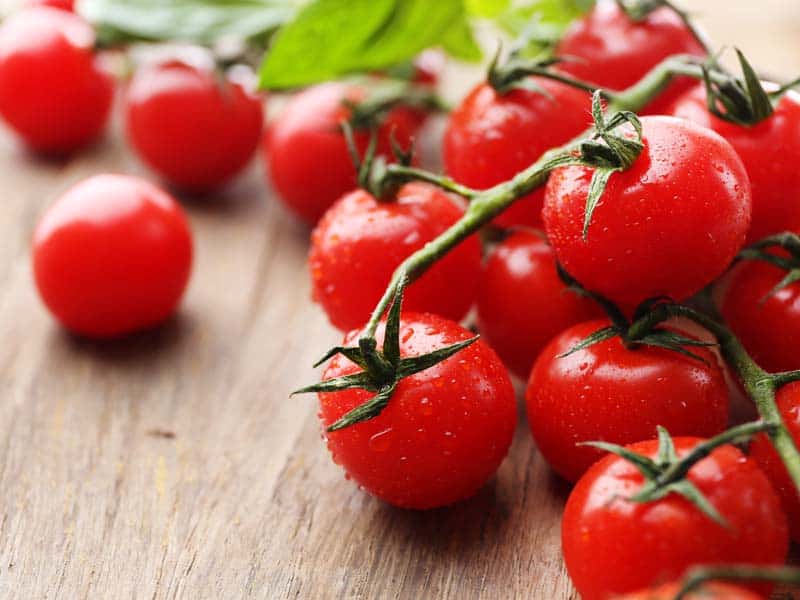
Tomatoes
Nothing beats the flavor of a fresh tomato. I spend all winter avoiding tomatoes at the grocery store waiting for them to be in season and available at the farmers market.
There are approximately 7,500 tomato varieties. Yellow and orange tomatoes are usually less acidic than red tomatoes. Tomatoes are a great source of lycopene, vitamin C potassium, folate, and vitamin K.
Buying
Tomatoes should be bright in color with smooth skin. Avoid tomatoes that are too soft or bruised.
Storing
Tomatoes should not be refrigerated. They should be stored at room temperature and consumed within a few days.
Unripe tomatoes will continue to ripen at room temperature.
Preparing
Remove the core of a tomato by cutting around the stem end with a small serrated knife.
Remove the skin by scoring the bottom of each tomato with an X, place the tomato in boiling water for 10-30 seconds, then dip it quickly in cold water. The skins will peel right off.
Recipes
- Summer Vegetable Pasta Salad
- Roasted Tomato Soup
- Shrimp Pesto Flatbread Pizza
- Easy Homemade Pasta Sauce
- Stuffed Tomatoes with Spinach - Two Sleevers
- Cherry Tomato Caprese Salad - The Travel Palate

Watermelon
Watermelon has sweet, juicy flesh and is usually deep red to pink in color, with numerous black seeds, although seedless varieties do exist.
The fruit is often eaten raw while the rind is usually pickled. The seeds have a nutty flavor and can be dried and roasted, or ground into flour. Watermelon is 91% water.
Buying
Look for watermelons that are symmetrical in shape, heavy for their size, and dull not shiny.
Watermelons should have dried stems and yellowish undersides. Watermelons develop a large, creamy yellow spot (or field spot) on the rind during the growing process. That yellow spot means the watermelon had time to ripen in the sun and is ready to eat.
Avoid watermelons that have bruises, cuts, dents, and are light for their size.
Storing
Store whole watermelons at room temperature. Refrigerate cut watermelon in an airtight container and use it within 4 days.
Preparing
Wash, rinse, and dry a watermelon before cutting it.
Recipes
- Easy Watermelon Granita - Raised on Veggies
- Watermelon Strawberry Popsicles - Maple and Mango
- Watermelon Balls with Lime and Mint Simple Syrup - Drive Me Hungry
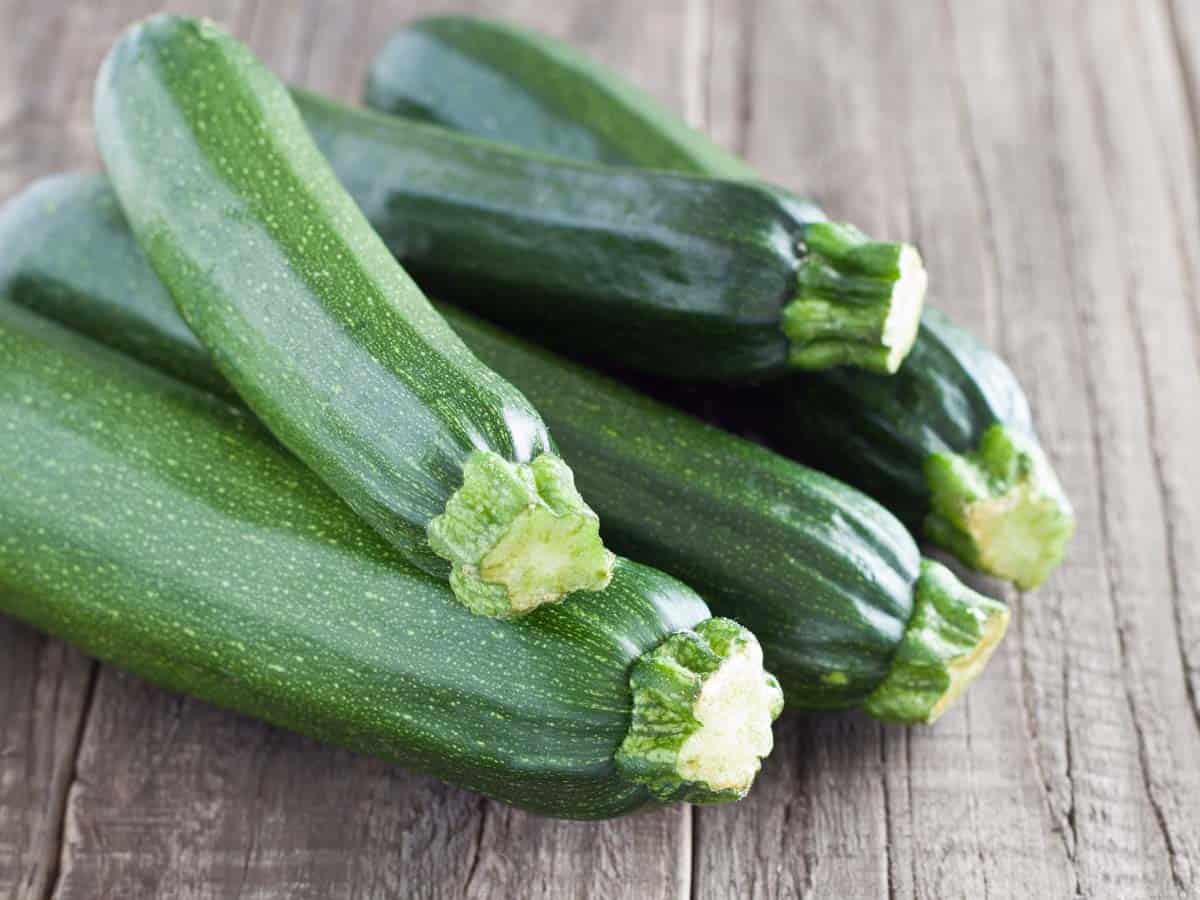
Zucchini
Zucchini is considered a summer squash. Meaning its prime season is May to August. Summer squash has thin, soft skin and soft edible seeds, whereas winter squash has hard skin and seeds.
Zucchini can grow really big! The biggest one ever recorded was 7 feet 10 inches. Most zucchinis would grow to be as big as a baseball bat but they are usually picked when they are much smaller because as they grow they become tough and fibrous.
Buying
Look for zucchini that are no longer than six inches and one to two inches in diameter.
Zucchini should have firm, shiny, and slightly prickly skin, be free of cuts and blemishes, and have at least one inch of stem attached.
Avoid longer and bigger zucchini they tend to be tough and fibrous. Also, avoid zucchini that are soft or have cuts and blemishes.
Storing
Store zucchini, unwashed, in a perforated plastic bag in the crisper drawer of the refrigerator for up to 5 days. If zucchini starts to wilt, use immediately.
Cooked zucchini should be covered, refrigerated, and used within two days.
To freeze zucchini, slice into rounds, blanch for two minutes, plunge into cold water, drain, and seal in airtight containers or baggies. Frozen zucchini may be kept for up to one year.
Preparing
Wash zucchini just before preparation. Peeling is not necessary.
Recipes
Thanks for Reading!
If you try this recipe, let me know! Leave a comment and rate it below! You can also snap a picture and post it on Facebook or Instagram be sure to tag me @RaspberriesandKohlrabi.
Subscribe to get more recipes and tips by email.


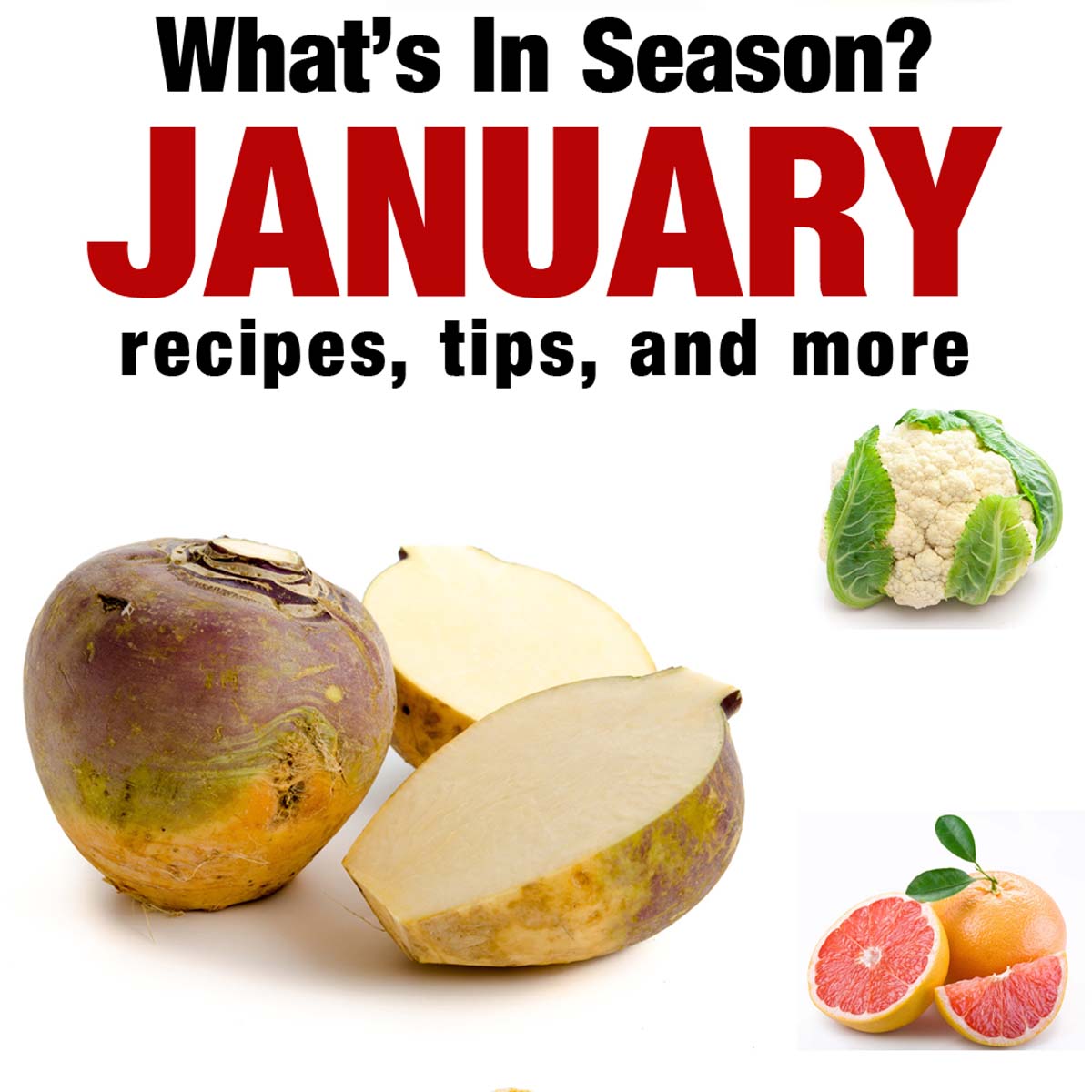
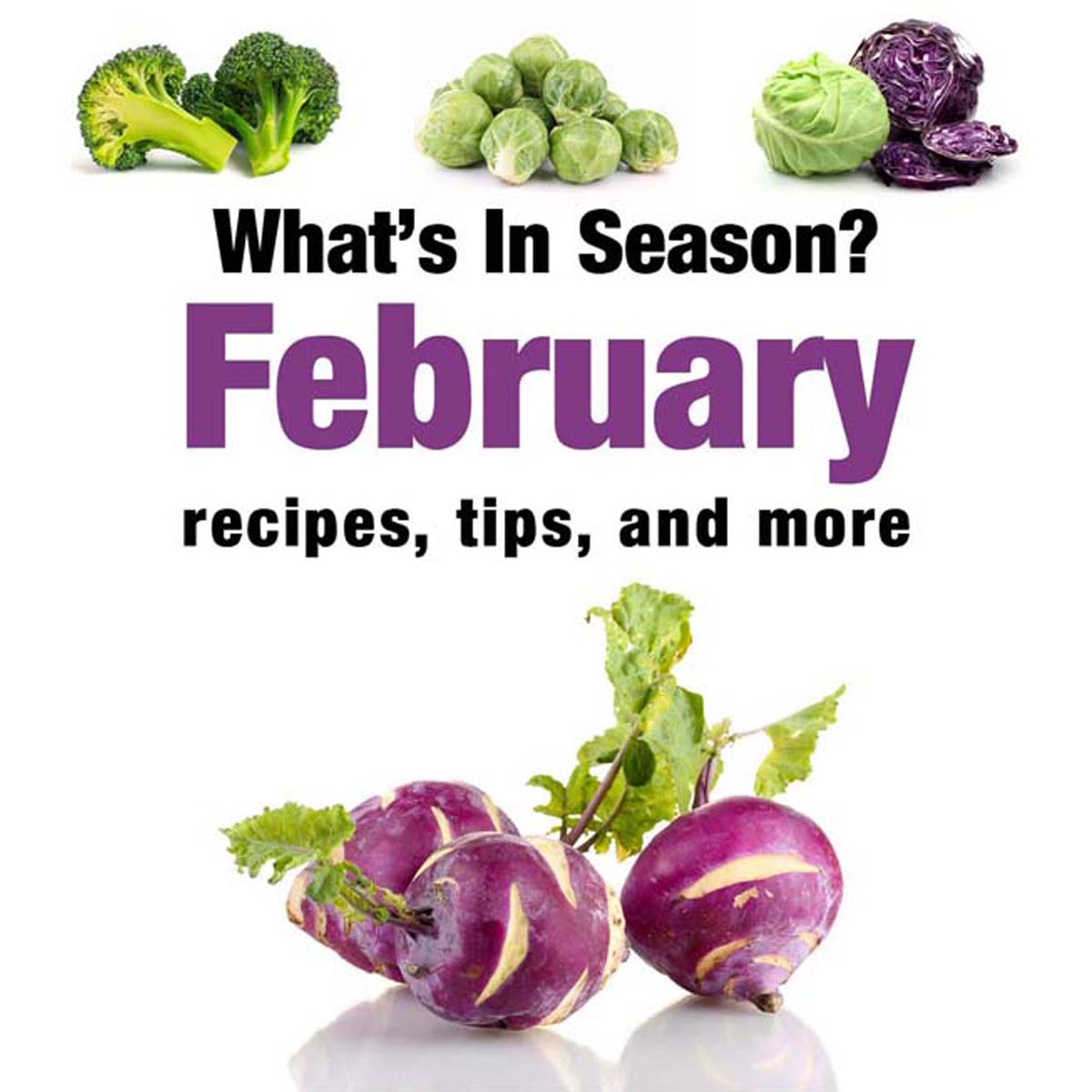
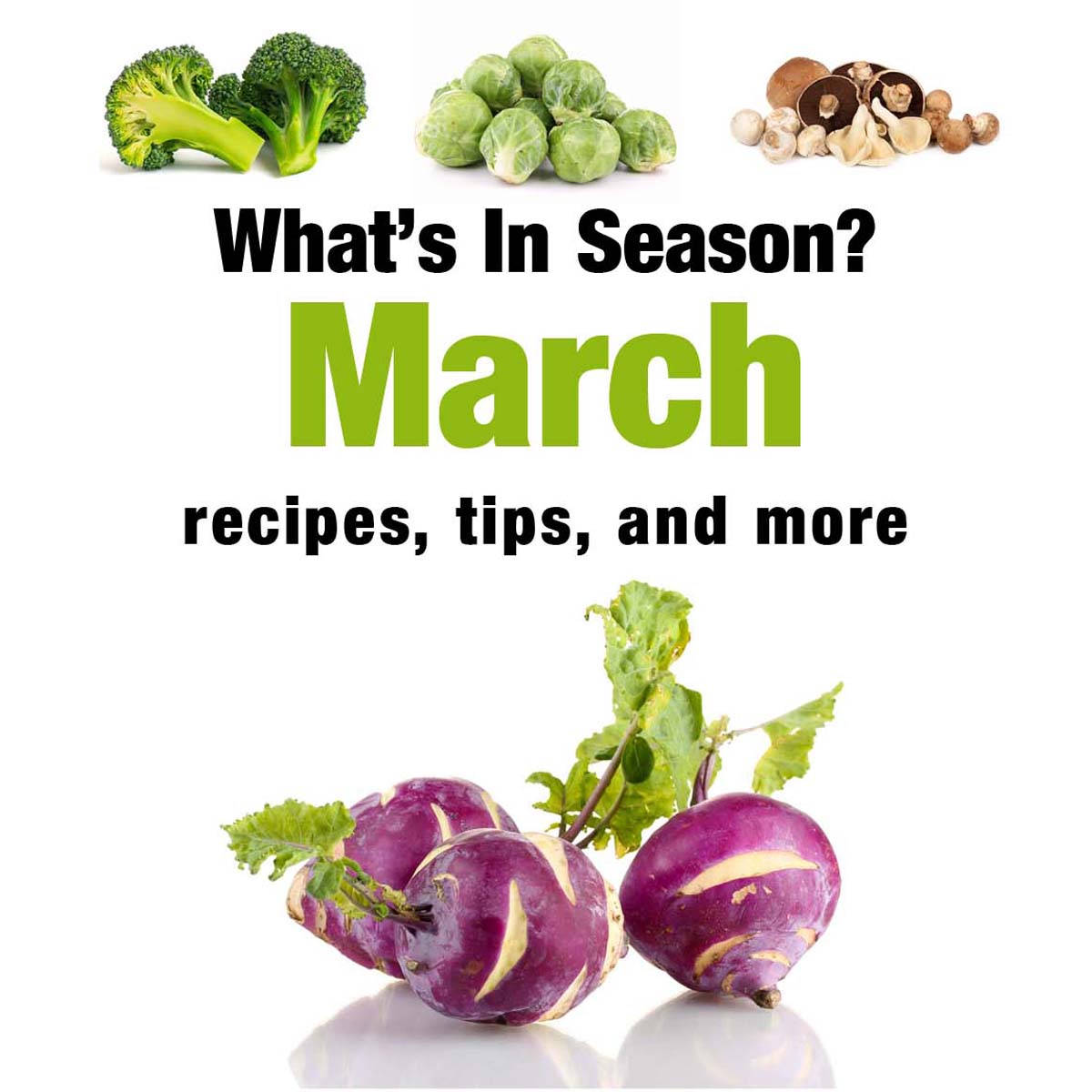
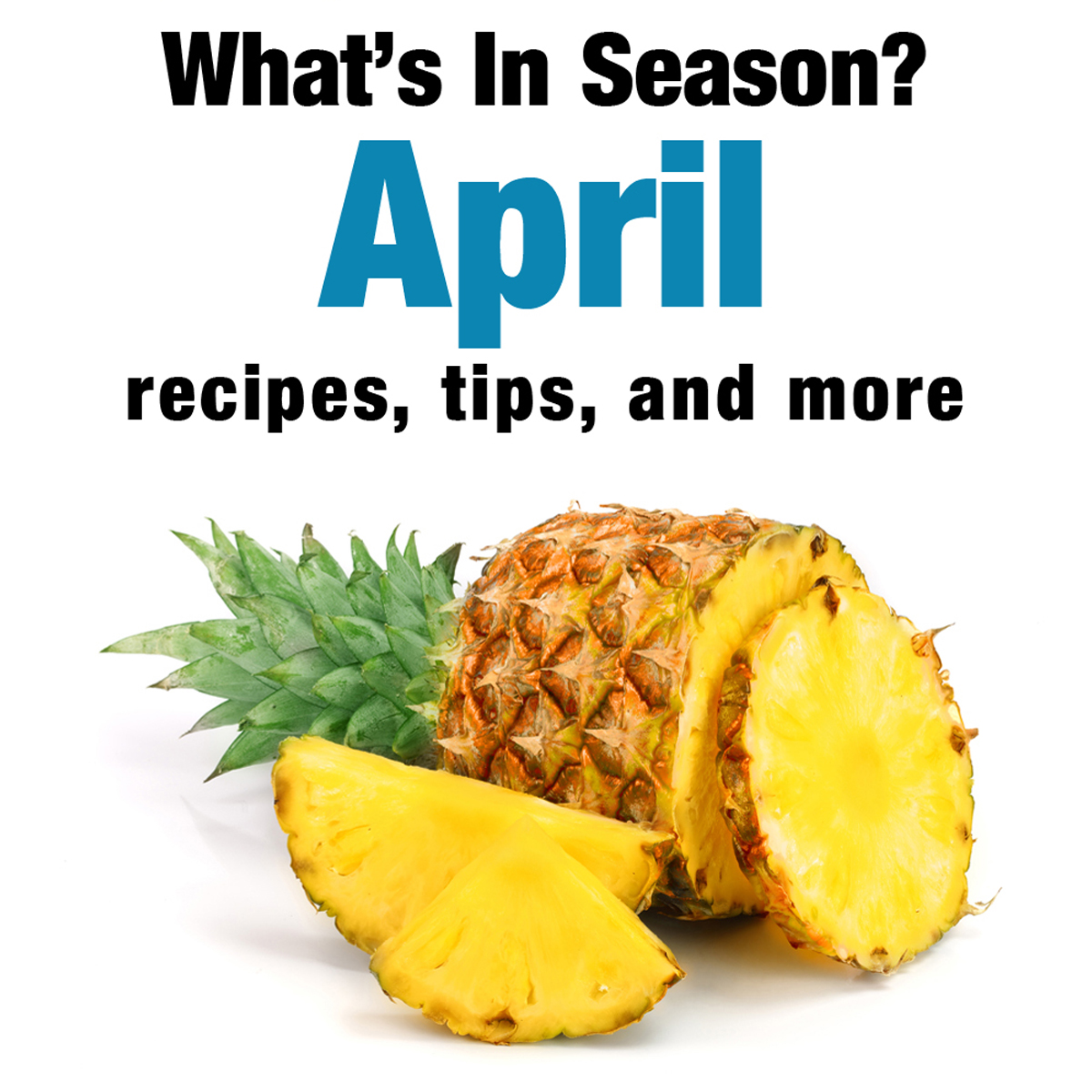
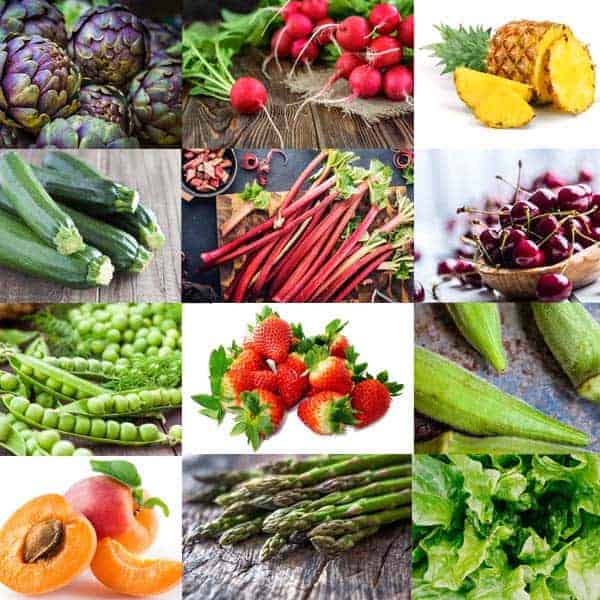
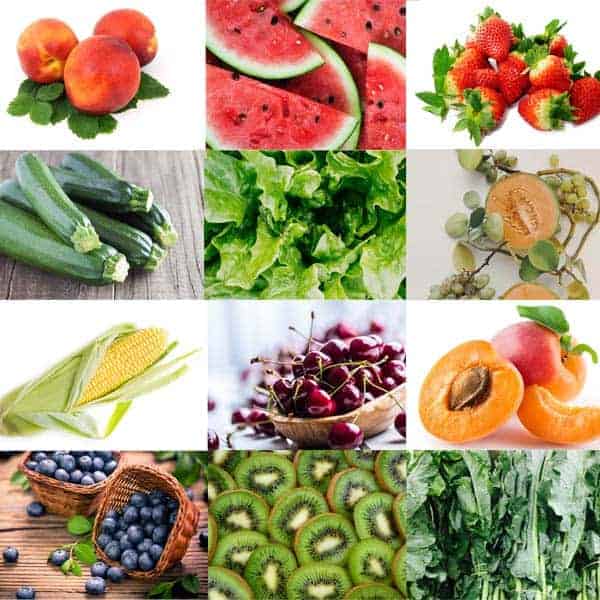
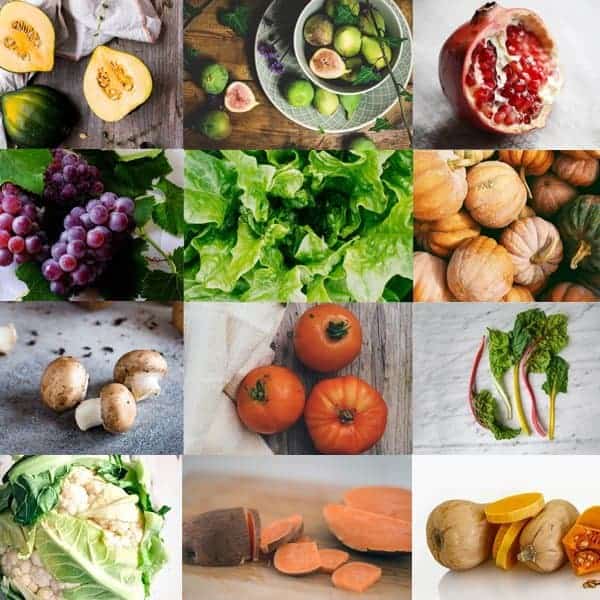
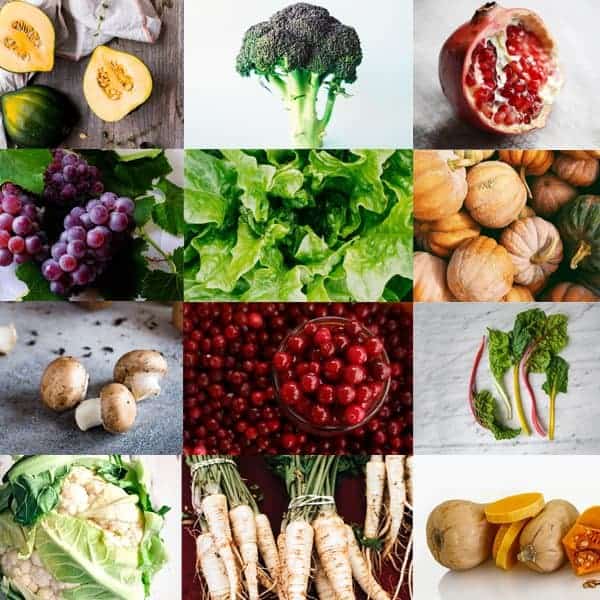

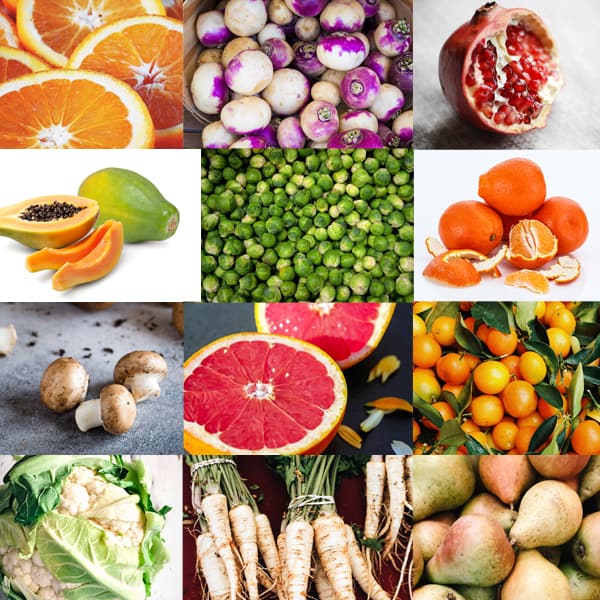
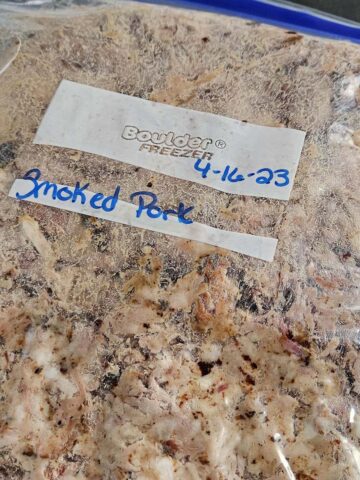
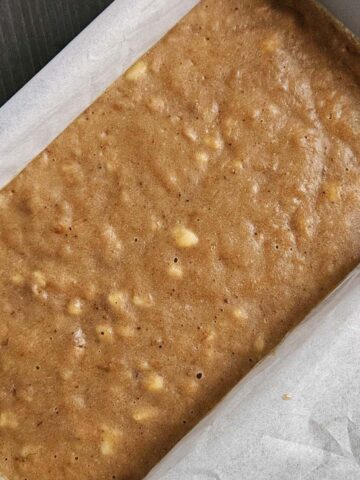
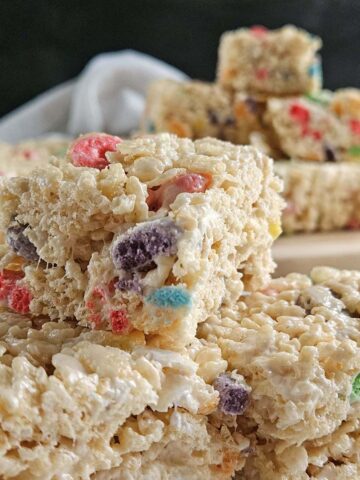
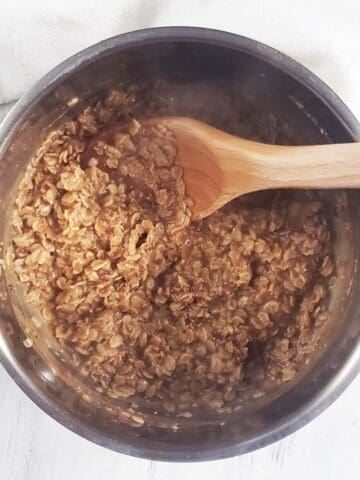
Comments
No Comments